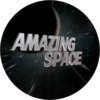Members Can Post Anonymously On This Site
"Far Out" Episode 2: Now Streaming on NASA+
-
Similar Topics
-
By NASA
2 min read
Preparations for Next Moonwalk Simulations Underway (and Underwater)
NASA’s C-130, now under new ownership, sits ready for its final departure from NASA’s Wallops Flight Facility in Virginia, on Friday, April 18, 2025. NASA/Garon Clark NASA’s C-130 Hercules, fondly known as the Herc, went wheels up at 9:45 a.m., Friday, April 18, as it departed from its decade-long home at NASA’s Wallops Flight Facility in Virginia, for the final time. The aircraft is embarking on a new adventure to serve and protect in the state of California where it is now under the ownership of the California Department of Forestry and Fire Protection (CAL FIRE).
The transition of the C-130 to CAL FIRE is part of a long-running, NASA-wide aircraft enterprise-management activity to consolidate the aircraft fleet and achieve greater operational efficiencies while reducing the agency’s infrastructure footprint.
The C-130 Hercules takes off for the final time from NASA’s Wallops Flight Facility in Virginia.NASA/Garon Clark “Our C-130 and the team behind it has served with great distinction over the past decade,” said David L. Pierce, Wallops Flight Facility director. “While our time with this amazing airframe has come to a close, I’m happy to see it continue serving the nation in this new capacity with CAL FIRE.”
The research and cargo aircraft, built in 1986, was acquired by NASA in 2015. Over the past decade, the C-130 supported the agency’s airborne scientific research, provided logistics support and movement of agency cargo, and supported technology demonstration missions. The aircraft logged approximately 1,820 flight hours in support of missions across the world during its time with the agency.
Additional aircraft housed at NASA Wallops will be relocated to NASA’s Langley Research Center in Hampton, Virginia, in the coming months.
For more information on NASA’s Wallops Flight Facility, visit: www.nasa.gov/wallops.
By Olivia Littleton
NASA’s Wallops Flight Facility, Wallops Island, Va.
Share
Details
Last Updated Apr 18, 2025 EditorOlivia F. LittletonLocationWallops Flight Facility Related Terms
Wallops Flight Facility Explore More
4 min read NASA to Launch Three Rockets from Alaska in Single Aurora Experiment
UPDATE March 31, 2025: The third and final rocket of the AWESOME mission launched on Saturday,…
Article 4 weeks ago 5 min read NASA Super Pressure Balloons Return to New Zealand for Test Flights
Article 1 month ago 2 min read NASA Wallops Breaks Ground on New Causeway Bridge
Article 4 days ago View the full article
-
By European Space Agency
Registrations are now open for the European Space Agency’s Living Planet Symposium (LPS) – one of the largest Earth observation conferences in the world. The event will take place on 23–27 June 2025 in Vienna, Austria.
View the full article
-
-
Check out these Videos




Recommended Posts
Join the conversation
You can post now and register later. If you have an account, sign in now to post with your account.
Note: Your post will require moderator approval before it will be visible.